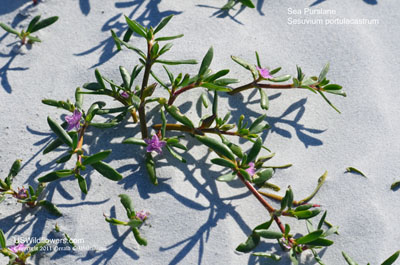Wildflowers of the United States | |||||||||||||
| |||||||||||||
Sesuvium portulacastrum - Sea Purslane, Sea Pickle, Shoreline Seapurslane. This is a prostrate, succulent herbaceous plant of dunes and beaches along the coast of the Gulf of Mexico and the southeastern Atlantic Coast. The stems and leaves are edible, and have a salty pickel-like flavor, giving it the alternate common name of Sea Pickle. | Found in: AL, FL, GA, HI, LA, MS, NC, PA, SC, TX Leave comments on Sesuvium portulacastrum at this link.   Blue=Native; Grey=Introduced Map from USDA Plants Database: USDA, NRCS. 2017. The PLANTS Database (http://plants.usda.gov, 08 May 2025). National Plant Data Team, Greensboro, NC 27401-4901 USA. Search Our Database: Enter any portion of the Scientific, Common Name, or both. Do a general Google search of the entire site: #ad
| #ad
| | ||||||||||
|
Commercial / Cookie Notice Looking for Wildflowers for a specific state? Check here: | |||||||||||||
|
| |||||||||||||


